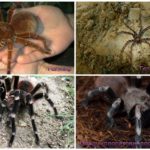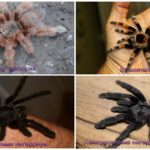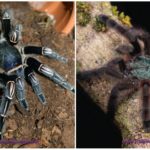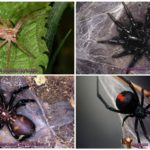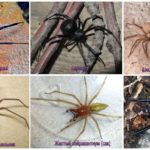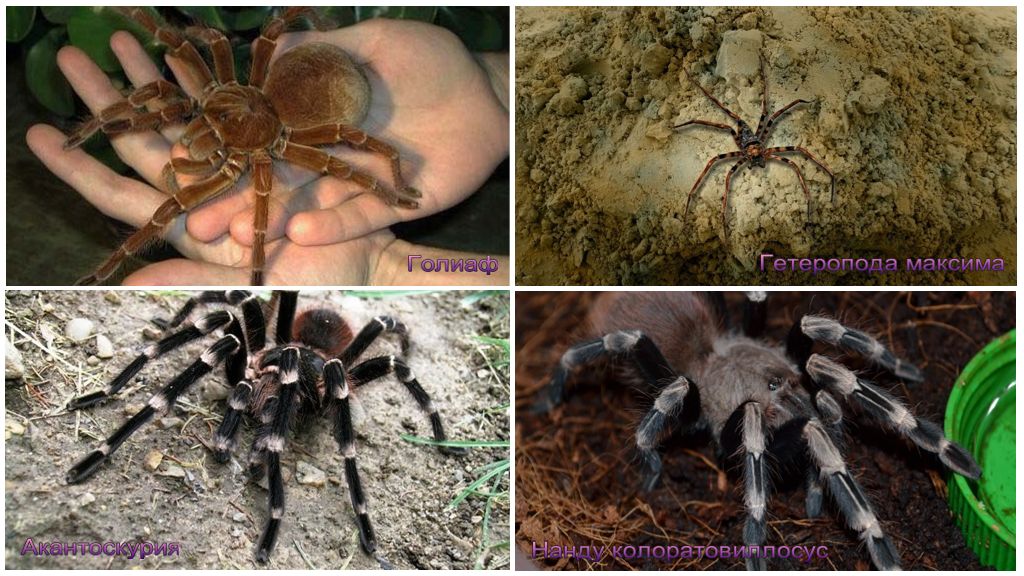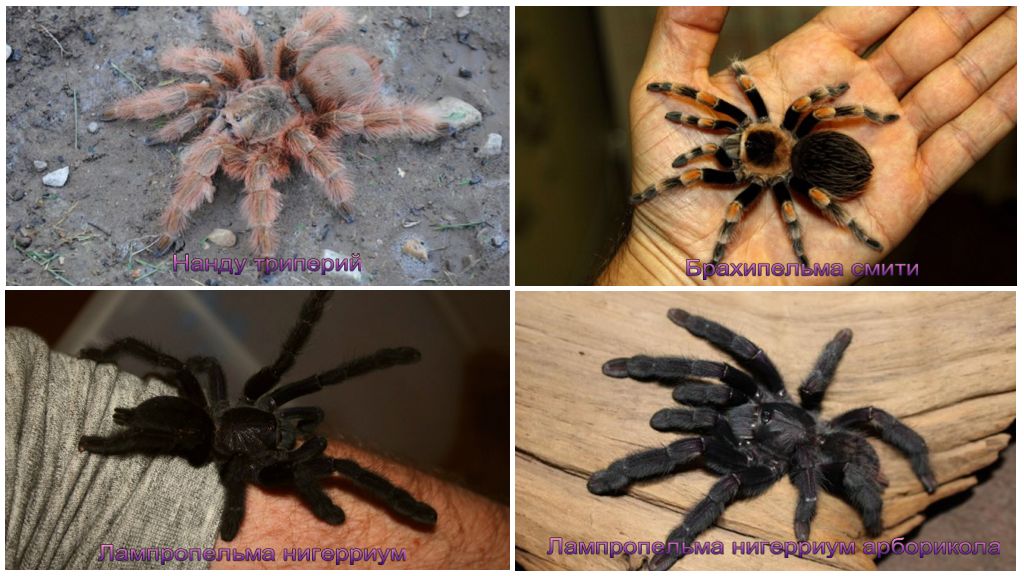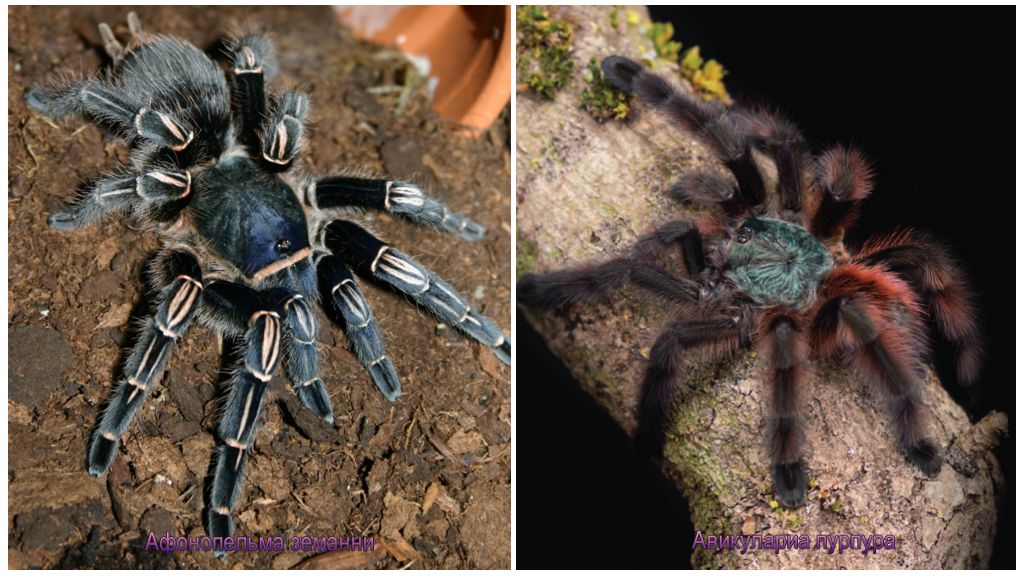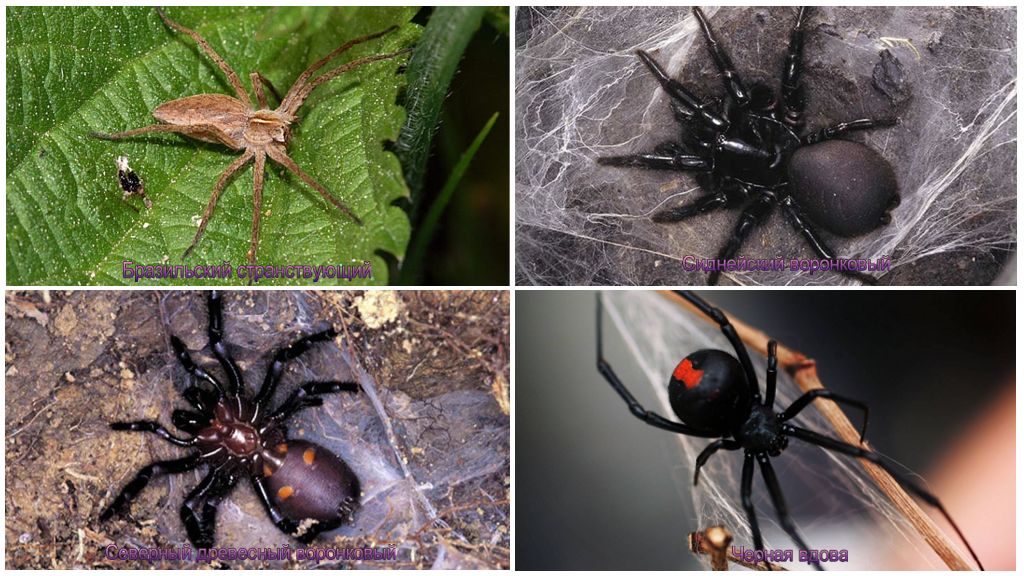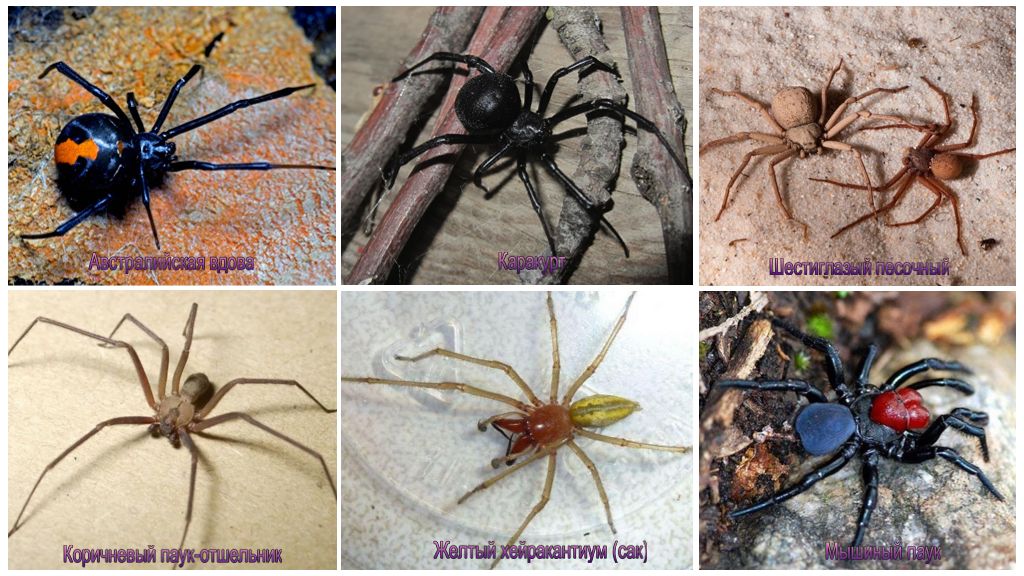Top 10 most terrible spider in the world
- The scariest spiders
- The scariest spiders
- The scariest spiders
- The scariest spiders
- The scariest spiders
Who is worse
In the evaluation criteria for scary spiders, you should add speed and aggressiveness. What is the use of a strong poison if the spider moves slowly and is able to catch only the prey sitting on the ground?
Interesting!
The fastest today include spider crabs waiting for prey in an ambush. How strong the poison is in them is unknown, since arthropods are small and do not bite humans. But the speed of the turn of their body when catching prey reaches 3000 ° per second. That is, for a second, a crab spider can turn around its axis 8 times.
If you choose creepy spiders in size, then the entire top 10 scary spiders will take tarantulas.
Face horrible
But almost cute inside. All tarantulas are poisonous, but their poison is of low toxicity and the bite of these spiders is not terrible for man. If the victim is not allergic to spider venom.But in this case, the size of the spider is not so important.
If you place the spiders in descending order, you get something like this rating:
- Theraphosa blondi (type Goliath).
- Heteropoda maxima (view of the Heteropod Maxim).
- Acanthoscurria (genus Acantoskuria spiders).
- Nhandu coloratovillosus (species Coloratovillosus).
- Nhandu tripepii (a view of Nanda triperia).
- Brachypelma smithi (view of Brachypelma Smith).
- Lampropelma nigerrimum (view of Lampropelma nigerrium).
- Lampropelma nigerrimum arboricola (type Lampropelma nigerrium arboricola).
- Aphonopelma seemanni (view of Afonoplem Zemanni).
- Avicularia purpurea (species Avicularia purpura).
On a note!
The size of a spider is usually determined by the size of its paws, since the body can be quite tiny. From this point of view, the heteropod of the maxim should be in the first place, since it is superior to the Goliath in the length of the paws. But Goliath looks more impressive.
Goliath
The body of the female grows to 10 cm. Males are smaller - 8.5 cm. The paw span can be 28 cm. The color is dark brown. The body is completely covered with short reddish-brown bristles. It lives in the tropical zone of South America.
On a note!
Although goliath bite is not dangerous, its venom can irritate the skin. More serious damage is caused by bristles, which is the main protection of the spider. Separated easily from the body of the tarantula, the bristles cause an allergic skin reaction in humans.
Heteropod maxim
In size it competes with Goliath, although the length of the female's body is only 4.6 cm, in the male it is 3 cm. But the span of the limbs is 25-30 cm. The species was recently opened in Laos. The color of the spiders is brownish yellow. There are no gender differences in color. Presumably the species lives in caves. The toxicity level of the poison and the strength of the bite are unknown. But this tarantula looks really scary. Especially because of the large chelicera.
Acanthoscuria
This is a genus of large spiders. The paw span of the smallest species is 12 cm. The largest one has 22 cm. The color is dark brown with a light border on the cephalothorax and light stripes on the legs. Externally, it resembles a South Russian tarantula, but has a more attractive appearance.
The character is nervous. If disturbed, can cause a bite. Considering the excitable nervous system of arthropods and their number among birdworm lovers, the venom of representatives of this genus is of low toxicity.
Nando coloratovillos
The body and paws of the animal are covered with thick and long reddish bristles. The length of the female is up to 9 cm. The paw span is up to 18 cm. A native of Brazil. For a person, the danger is easily falling out bristles.
Nande triperium
A very fluffy arthropod whose pink or red bristles perform a protective function. Therefore, the spider itself is not exchanged for bites and is valued for its docile temperament. Swing up to 18 cm.Females grow up to 8 cm, males up to 5 cm. Country of origin Brazil.
Brachyphema smithi
Body size is close to Goliath: up to 9 cm. Swing to 17 cm. The tarantula has a very beautiful color: dark basic background with red spots on the legs. With age, the contrast increases.
As protection uses bristles, as the poison is weakly toxic. A bite is not dangerous for a person. In addition, the animal has a very calm disposition.
Lampropelma Nigerrium
The body size of adults is 6–8 cm. The paw span is 17–19 cm. For very large specimens, the leg span can be 20 cm. The color of the females is coal black, the males are ashy, and there is a striped pattern on the abdomen.
On a note!
The nature of vile: fast, aggressive and unpredictable, without hesitation causes a bite. Poison is dangerous to humans.
Lampropelma nigerrium arboricola
Body size up to 8 cm, paws up to 18 cm. Females of black color, males ashy yellow. Burrowed animals. Hunt at night.
The character is similar to a fellow of the genus: aggressive fast arthropod with a strong poison. In the absence of shelter prone to bites. Poison can deliver to people a few unpleasant days.
Afonoplem Zemanni
Swing to 14 cm.Color black or dark brown with light stripes on the legs. Lead nocturnal. Fast and active only at night. The rest of the time, they prefer to sit in shelters, as they do not like sunlight.
The poison is weak. The bite is similar to aspen. When a person is bitten, local irritation and swelling disappear after 2-3 days.
Avicularia purpura
The inhabitant of Ecuador in nature builds nests in hollows. Loves to use for nesting voids in human housing. Completely covered with thick black bristles, casting a purple-blue color to the sun. It grows up to 6 cm. Leg span up to 14 cm.
The protection is irritating bristles, as the poison is weak and the bite is not dangerous for humans.
Although the photos of scary tarantulas spiders make an impression, it’s not these giants that are really dangerous, but modest little spiders. Often these spiders inconspicuous camouflage color.
Really dangerous
Prior to the invention of sera that neutralize spider venom, the bites of some arthropods led to human death. Usually, people died from internal bleeding, as spider venom violates blood clotting and destroys hemoglobin.It is these arthropods that are very scary representatives of their group, although they often have a harmless appearance.
Top 10 dangerous spiders:
- Brazilian wandering.
- Sydney funnel.
- Northern woody funnel.
- Black Widow.
- Redspine (Australian widow).
- Karakurt
- Six-eyed sand.
- Brown recluse spider.
- Yellow Heirakantium (Sack).
- Mouse spider.
On a note!
The bites of spiders rarely lead a person to immediate death. If you have time to catch the arthropod and present it to the specialist for identification, there is every chance that the poison will be neutralized. If the spider could not be caught, it would be nice to at least describe it. But for this you need to know what it looks like. And the idea of the appearance of an arthropod is not bad to know not only by description, but also by photo.
Brazilian Itinerant
A whole genus of large spiders, externally similar to the "native" southern Russian tarantula. The color is gray. Well developed chelicera. The poison has a neurotoxic effect. Before the appearance of serum, up to 40% of victims died from bites from Brazilian runners. After the appearance of the antidote, the number of deaths was reduced to zero.
Sydney funnel
The only representative of the genus Atrax. It has limited distribution in New South Wales in Australia.
The size of the spider body is 10-50 mm. The color is variable: from bluish-black to brown. Likes to settle in houses. Hunting large insects and relatives.
It has long chelicera with a lot of poison. When attacking takes a threatening posture, but with venom can actually drip poison.
The bite of the Sydney funnel spider is extremely dangerous for humans and primates. The poison contains a neurotoxin that affects the human nervous system. For 50 years, from 1927 to 1981, 13 people died from the bites of Atraks.
Interesting!
Other mammals are resistant to the poison of the Sydney spider. Due to this, since 1981 it became possible to obtain serum from the blood of animals from this poison. With timely treatment to the clinic, death is excluded.
Northern tree funnel
The largest Australian representative of funnel spiders. The area includes the habitat of the Sydney funnel. Behavior in both species is similar. Northern woody also behaves when attacked, and the amount of poison he has is not less, but it is less toxic.When a northern tree spider bites, a person develops symptoms of severe poisoning:
- nausea;
- muscle spasms;
- vomiting;
- pain at the site of the bite.
Important!
Experts believe that in some cases, the bite of a northern tree spider may result in the death of a person.
Black Widow
The size of the North American Black Widow is only 8-10 mm. But this does not prevent her from being one of the most dangerous spiders. The good news: the bite is dangerous only in a female. The bad: these spiders love to climb into a man’s dwelling. But they are not aggressive and bite, only if they pin down.
The poison of the Black Widow causes a person to vomit, thirst, excessive sweating. Before the appearance of serum, 5% of the victims died from the bite of this spider.
On a note!
You can find the Black widow by the characteristic red spot in the form of an hourglass on the lower side of the abdomen.
Redspine (Australian widow)
The female is only 10 mm long. The body length of males is 3-4 mm. The distinctive feature of the female is a red stripe on the upper side of the abdomen, dividing it in half. One of the most poisonous spiders in Australia. For a person, the bite is very dangerous and causes severe pain, as the poison has a neurotoxic effect.In recent years, an antidote has been created, but it does not relieve pain.
Karakurt
Eurasian version of the Black Widow. It lives in the southern regions of the mainland. On the upper side of the black abdomen of the female Karakurt are red spots.
This is a large black widow spider. The body length of the female is 10-20 cm. People do not attack themselves. When biteed, the poison acts immediately, causing symptoms of general poisoning. Victims also complain of very severe pains in the lumbar region, chest, and abdomen.
On a note!
Cattle are especially sensitive to karakurt poison. Karakurt can kill a horse or a camel with a single bite.
Six-eyed sand
It lives in the deserts of Africa and South America. The shape of the body resembles a crab. Color camouflage, the color of the sand. Spider bite is dangerous for humans. Poison can cause necrotic damage to soft tissue. But since the discovery of the species, only two deaths from the bite of a six-eyed sand spider have been known.
Brown recluse spider
One of the most famous poisonous spiders in North America. Arthropods of small size: body length 7-12 mm, foot span 20 mm. But the bite of a brown recluse spider can cause a necrotic lesion in a person, which will later become an ulcer.
Yellow Heiracantium (Sac)
Initially, the spider Sak was a resident of the hot Central Asian steppes, but due to global warming and a pathological love for automobile engines, it managed to settle much further north. Today he is already met in the Volga region and Moscow region.
The color of the abdomen in Saka beige or bright yellow. Saka has huge powerful chelicera. Even in the picture this arthropod looks very scary. Saka's bite is not lethal, but he has a strong poison. The bites of Saka and hermit spider are similar in symptoms, which is why a person falls into a panic. Can not always recognize the bites of arthropods and doctors.
Important!
Sak attacks only when attacking him or threatening to nest.
Mouse spider
These arthropods are not aggressive, but since they are more active during the daytime, the chance to stumble upon a mouse spider is quite large. The species is not aggressive, if you do not climb to the female in the hole.
For humans, the poison of a mouse spider is not lethal, although it is capable of delivering trouble. The action is similar to the venom of funnel spiders and the same serum works against it.

